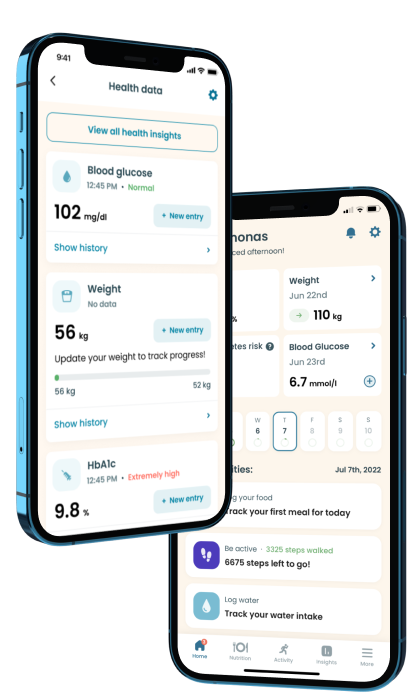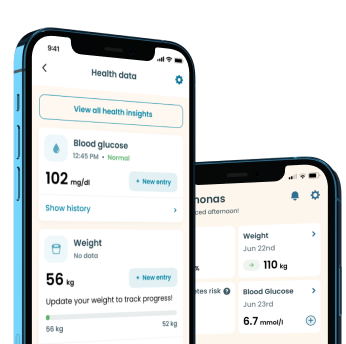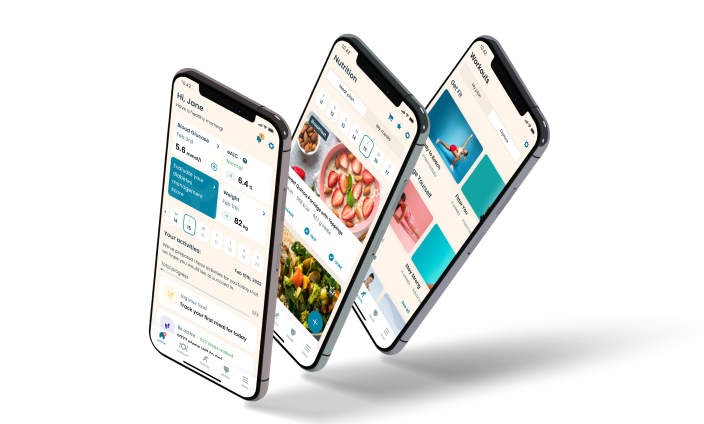Pizza and Diabetes

Bad
Managing type 2 diabetes involves making smart diet choices to lose weight and maintain blood sugar levels. However, in cases where you’re out of options, fast foods like pizza might be any port in a storm.
Since several debates exist on the safety of this food for diabetics, it’s only logical we resolve this mystery. This article collates available research and clinical trials on pizza and diabetes to confirm or condemn existing hypotheses on its safety.
Nutritional Profile of Pizza
Pizza contains a considerably high amount of carbs, with a slice (about 3.8 oz) yielding a staggering 35.6 g. Such an unusually high amount of carbs is very likely to cause blood sugar spikes. Although it has a fiber content of 2.46 g per slice, it still might not be enough to compensate for its elevated carb content.
Thankfully, its high protein content of 12.2 g per slice might just be enough to keep you filled for longer periods, preventing you from excessive eating. Sadly, you are still not in the safe zone as this great-tasting food contains a critical amount of fat and sugar that can potentiate high blood sugar levels and obesity.
Finally, while pizza provides a rich source of vitamins and minerals, its high sodium content (640 mg per slice — 27.8% DV) is not particularly healthy for diabetes patients with hypertension.
Why Diabetics Should Steer Clear of Pizza
Pizza undeniably makes for a great meal if you seek instant food. However, are diabetics part of the bandwagon that can safely enjoy this amazing treat? Let’s find out as we unravel research on pizza and diabetes.
Affects Heart Condition
Most fast food options like pizza affect the proper functioning of the heart. Namely, in a cross-over study covering ten diabetic patients, fast food elevates and sustains postprandial cardiac workload regardless of pre-exercise.
Notably, aside from an increased left-ventricular systolic and diastolic workload, fast food intake yielded a protracted increase in diastolic workload and resting heart rate. These ensued despite engaging in high and moderate-intensity exercise 16–18 hours before food intake.
These findings are of significance because cardiovascular complications make one more susceptible to diabetes.
Prevents Weight Management
The high-calorie and fat content of pizza is a source of concern for diabetics trying to maintain a healthy weight limit. On the one hand, an International Journal of Clinical Practice abstract links weight loss to reduced risk and delayed onset of type 2 diabetes, and in some cases, a reversal of the condition’s progression. On the other hand, in a cross-sectional study covering 300 Iranian students, the consumption of pizza, alongside other fast foods like a sandwich and fried chicken produced a 33.2% and 21.3% increase in obesity based on the waist-hip ratio (WHR) and body mass index (BMI), respectively.
Increases Blood Sugar Levels
Pizza is packed with unhealthily high amounts of nutrients for people with diabetes. Aside from its high carb content, its sugar content of 3.83 g per slice of pizza is likely to pump your blood glucose levels. Research proves that pizza elevates plasma glucose levels 4–9 hours after intake in insulin-dependent diabetes mellitus (IDDM) patients.
Factors to Consider Before Eating Pizza
While consulting your health specialist is the best way of determining how much you can eat, there are other important factors to consider, including the following:
- Satiation: If you are not hungry and out of options, you don’t necessarily have to eat pizza.
- Medication: The intake of high-carb meals like pizza might interfere with your existing medications. Hence, you should confirm with your doctor before adding pizza to your diet.
- Type of pizza: It’s advised to stick to healthy eating at all times. For example, a pizza crust with high fiber and low-sugar/low-fat sauces might have lesser detrimental effects on your blood glucose levels.
Healthy Ways to Eat Pizza
If you have diabetes, pizza is one of those foods you might want to steer clear of, if possible. While it’s clear that its nutrient profile isn’t diabetes-friendly by any means, for those that are still bent on having a bite of this great-tasting Italian dish, here are some healthy ideas you can try out:
- Add a lot of vegetables to your pizza
- Choose a low-fat cheese
- Manage calorie intake by opting for thin crust pizza
- Go for lean proteins like chicken over high sodium pepperoni
- Eat pizzas with whole wheat crust
Summary
Pizza is clearly no routine food for people with diabetes. It presents numerous risks ranging from an elevated cardiac workload to increased blood sugar levels. As such, it’s better avoid this food if you have diabetes.
However, for those that can’t afford to miss out on this sweet/savory meal, you can reach out to your health practitioner for better advice based on your condition’s severity.

Download Klinio app!
Get more by downloading our free Klinio App. Analyze your health, form new habits and manage your diabetes anytime, anywhere.
OR
SCAN QR CODE



GET THE APP











